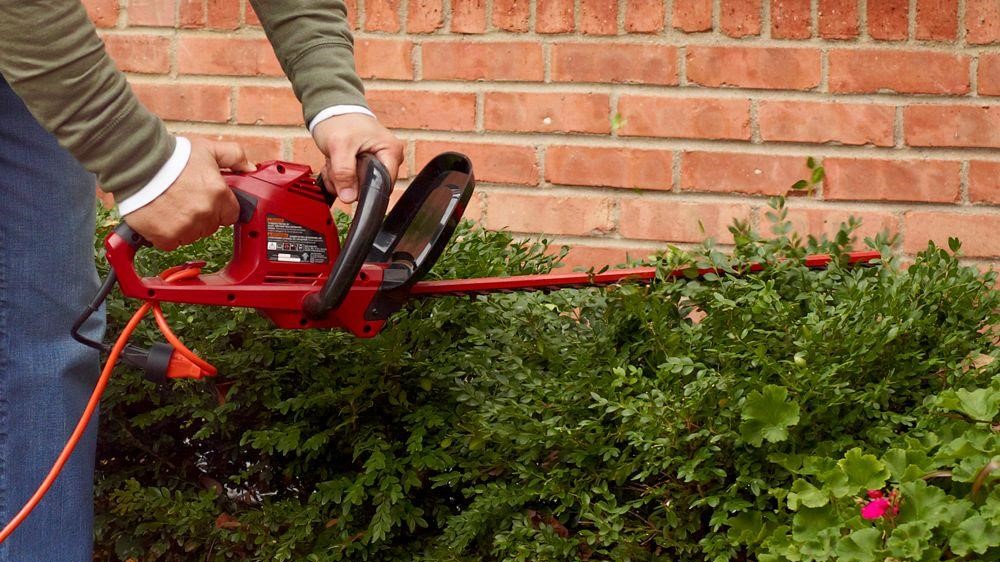How to choose a hedge trimmer
Equip yourself with the right cutter

Knowing how to choose a hedge trimmer that's right for you, your hedges, and your gardening ability will make all the difference when it comes to using one.
When shopping for one of the best hedge trimmers, knowing exactly the type of model you need can save you from overspending on unnecessary cutting power. And in the same vein, you'll avoid buying a trimmer that's too weak if you're looking for something capable.
We spoke to gardening expert Alex Kantor, owner of Perfect Plants Nursery, to find out what we should be looking for.
"First, determine the size and scope of your trimming needs, as this will help determine the power source (electric, battery-powered, or gas) and the blade length," Alex advises. This is a great place to start, but there is a lot to take into consideration, so here are some features to keep in mind.
How to choose a hedge trimmer
1. Power source
"To find the right hedge trimmer for your needs, consider factors such as the size of your hedges, the thickness of branches you'll be trimming, and the frequency of use. Electric or battery-powered trimmers are generally suitable for smaller tasks, while gas-powered or heavy-duty electric models are better for larger or more frequent tasks," Alex recommends.
The type of hedge trimmer you choose should also depend on the type of vegetation you plan to cut. Gas hedge trimmers will suit thicker foliage and larger areas that need tackling. They also mean you won’t be caught without battery life when you need it.
Electric hedge trimmers, though less powerful, are all-around easier to use. They have ample power for everyday yard tasks and run at a quieter volume. You won’t have to worry about fumes or emissions with these trimmers either. You can select either corded or cordless electric trimmers, with cordless options being more versatile but more expensive, due to their batteries.
Sign up to receive the latest news, reviews, buying guides and deals direct to your inbox
Saying that electric hedge trimmers are becoming more powerful, often rivaling their gas counterparts. Electric trimmers will often list what type of gas engine they'll equate to, so be sure to see how they compare.
If you need to cut through tough, woody branches that are 3/4 of an inch or wider, a hedge trimmer might not be the right tool for the task. Instead, consider a manual pruning saw or even one of the best chainsaws to groom especially thick-stemmed vegetation.

Alex has worked in the horticultural industry for over 20 years and grew up on the nursery since his childhood years. Alex is an expert on trees, shrubs, indoor plants, and landscaping. He is passionate about growing and helping others learn the trade. You'll see him driving around the nursery with his puppy sidekick, Cricket.

2. What blade do you need?
Hedge trimmers use blades with sharp metal teeth to slice away at vegetation. The single-sided variety of blades has teeth that face away from you as you work, which is a worthwhile safety measure. The double-sided models work in both directions and can complete yard tasks more quickly, but you must be alert and equipped with PPE while using them.
When it comes to blade length, bigger is not always better. "Long-bladed trimmers are ideal for covering larger areas quickly, while shorter blades offer greater precision for shaping and detailing," Alex explains.
In general, hedge trimmer blades extend somewhere between 13 inches and 40 inches. Trimmers sporting 16-inch blades are best suited for small or average-size hedges. 18-inch blades are good for grooming average to large hedges, and 20-inch blades are best for big hedges. Since a 24-inch blade can handle a wide variety of plant types, it’s a common length for residential trimmers. If you want a model with a blade that is longer than this, be sure you can maneuver it without difficulty.
3. Consider the cutting capacity
A hedge trimmer’s cutting capacity depends on the spacing between the blade teeth or gap. The gap determines the maximum branch size the machine can safely cut. The larger the gap the greater the cutting capacity of the trimmer. Typically, hedge trimmers have a gap of 1 inch or greater, but you can find models with a gap of 3/8 to 3/4 of an inch. For thick, dense, or woody plants, you probably want to opt for a large cutting capacity. For young, leafy hedges with fine stems, a lower cutting capacity will work.
4. Extra features?
Most hedge trimmers have the same basic design, no matter their power source or blade length. So, it’s the extra features that differentiate them and make them fit specific needs.
Some trimmers come with a shoulder strap, which can relieve strain on your arms during long trimming sessions. Others have ergonomic handle designs that increase comfort and enhance maneuverability. Others still have anti-vibration technology that makes for a smoother, more manageable trimming experience. And the best of the best have laser-cut blades that make clean, straight cuts on every pass. Picking a tool that has one or more of these features ensures you get the most value and power for your dollar.
5. Opt for a comfortable weight
A trimmer with a longer blade is heavier and more cumbersome, so not only do you need more strength to hold it, but you also have to take greater care to operate it correctly to get the results you want.
Reviews
Echo eForce DPB-2500 review: a leaf blower as a snow removal tool?
Opinel Hand Pruning Shears review: are these the world’s most stylish secateurs?
STIHL HSA 60 Hedge Trimmer review: a battery-powered hedge trimmer that "gets the job done"
STIHL FSA 200 R String Trimmer review: quirky yet powerful, efficient and battery-powered
Husqvarna Combi Switch 330iK review: A versatile, all-in-one lawn tool
ENHULK 58V 16” String Trimmer review
Husqvarna Hedge Master 320iHD60 review: a cordless hedge trimmer on a mission to master hedges
"Avoid choosing a trimmer that is too heavy or difficult to maneuver, as this can lead to fatigue, strain, and an unfinished yard job," Alex recommends. The heavier hedge trimmers tend to have longer blades and more power, but if you're not dealing with large hedges with thick branches, then you likely won't need that much power.
To find a hedge trimmer that’s a comfortable weight, you may have to look for one with a shorter blade or consider a corded model, which tends to weigh less than battery-operated and gas machines.
6. Know your brands
Alex recommends: "Choose a well-known and reputable brand that offers reliable performance, durability, and good customer support. Some popular hedge trimmer brands include Black+Decker, DeWALT, Stihl, and Husqvarna."
This may seem obvious, but having a tool that's reliable and can be repaired by an established brand if necessary can solve a lot of problems down the line. Plus, many of these manufacturers will offer some kind of warranty.
For more info, we compared two of the biggest hedge trimmer brands in our guide to Husqvarna vs Greenworks.

Dan Fauzi, former Features Editor at Top Ten Reviews, is a seasoned product reviewer with expertise in tech, homes & gardens, outdoor living, and sports. Dan is currently based in Bristol and holds a BA in Philosophy and an MA in Magazine Journalism. Outside work, Dan enjoys music, art, trekking, and DJing.
